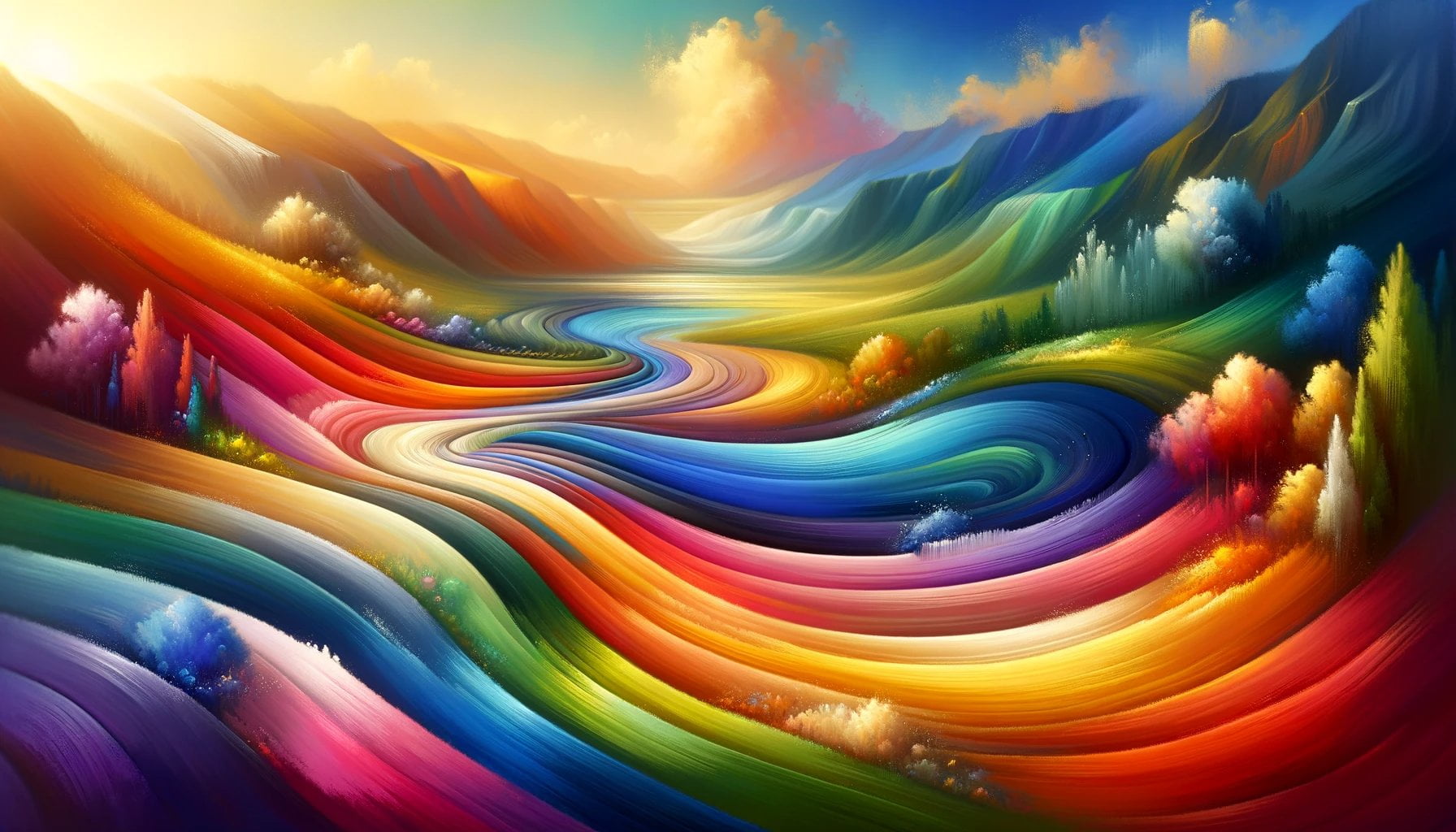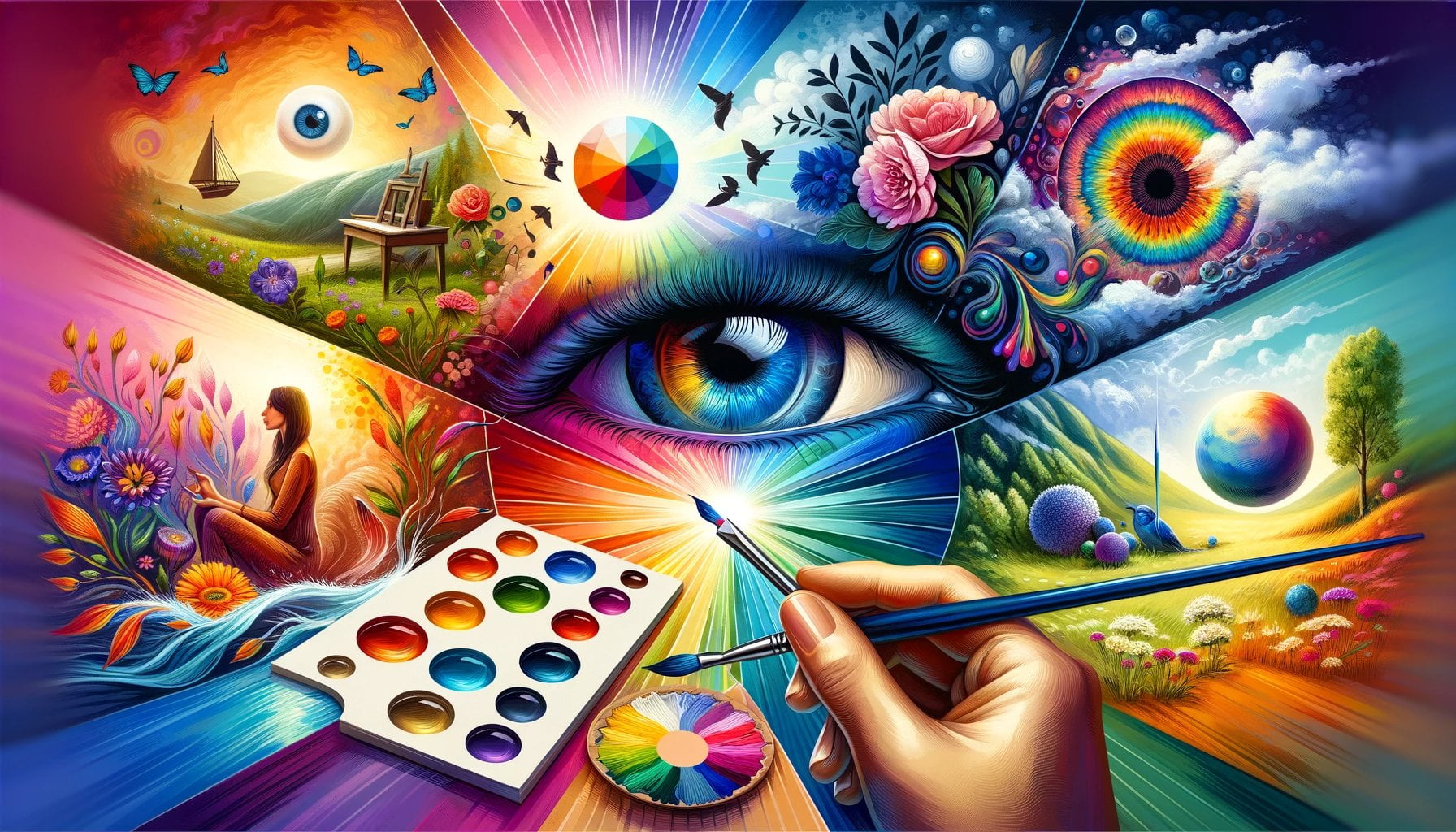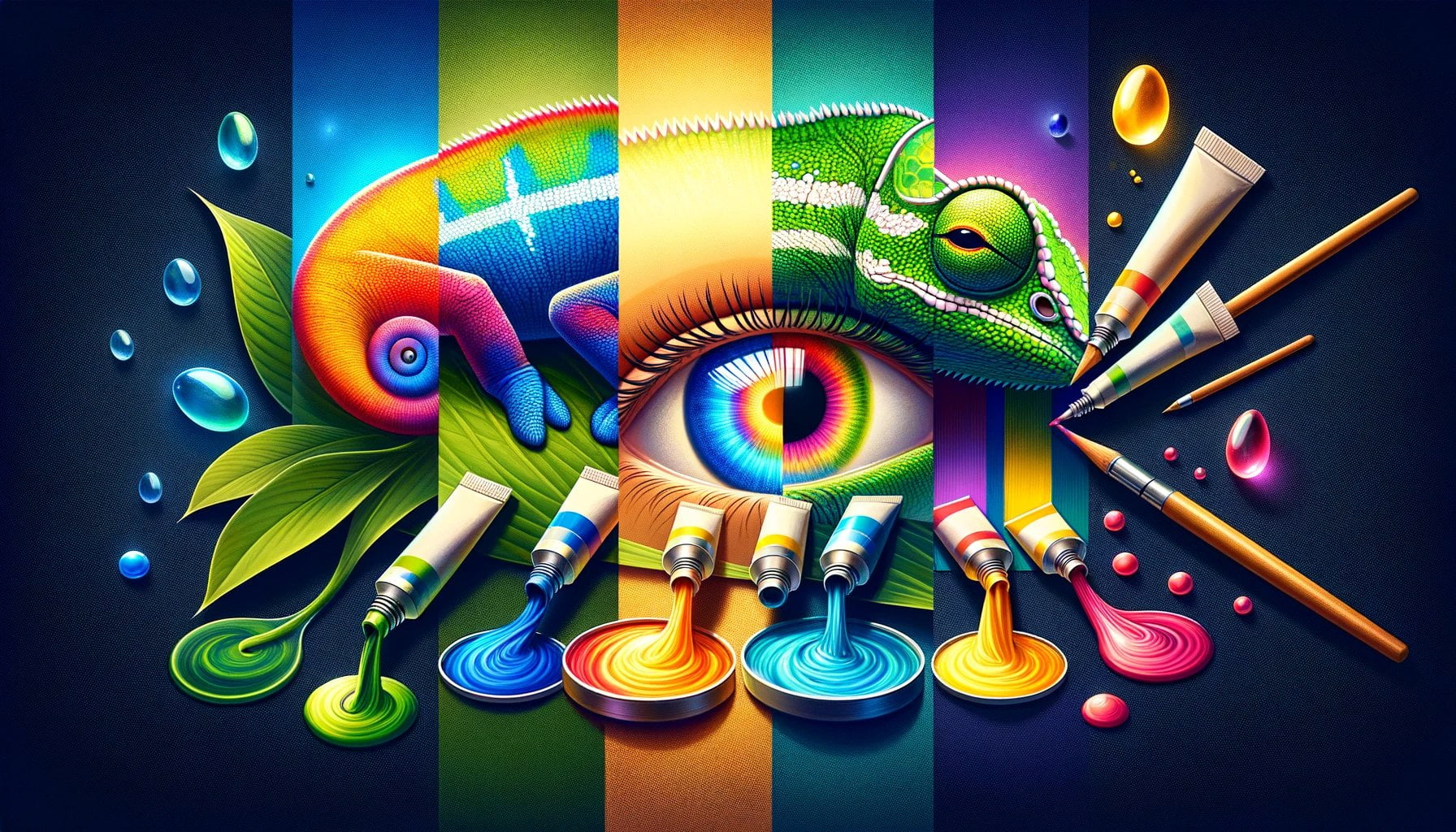Welcome to “Fascinating Insights: 5 Color Facts That Will Expand Your Understanding!” If you’ve ever wondered what lies beyond the surface of colors, prepare to be enthralled. In this article, we delve deep into the world of colors, unraveling five captivating facts that will shift your perspective and leave you with a newfound appreciation for hues. Whether you’re a designer seeking inspiration or simply curious about the science behind colors, this comprehensive guide will ignite your imagination and expand your understanding of this mesmerizing subject. So, let’s embark on a captivating journey into the world of colors!

Key Takeaways:
- Pink is a calming color and is often used to control anger.
- Red is the first color that babies see due to its longer wavelength.
- The human eye can perceive about 10 million colors, including 1000 levels of light-dark, 100 levels of yellow-blue, and 100 levels of red-green.
- Colorblind people often have better night vision and can sometimes perceive the luminosity of colors that normal-sighted people cannot.
- People are more likely to forget something when it is presented in black and white.
What are 5 facts about colors?
Fact 1: Pink is a calming color often used to control anger
Pink is more than just a pretty color. It possesses the inherent power to soothe and calm our emotions, making it an excellent choice for controlling anger. This fact has been supported by various studies, which have shown that exposure to the color pink can lead to a decrease in aggression and anxiety levels. So, next time you feel overwhelmed by anger, consider surrounding yourself with this gentle hue to harness its calming effects.
Fact 2: Red is the first color that babies see
The world of colors is an exciting journey for newborns, and it all begins with the vibrant shade of red. Due to its longer wavelength, red is the first color that babies can detect. As they grow older, their ability to perceive a wide range of colors develops. Understanding this fascinating fact helps us appreciate the wonders of a newborn’s visual experience and highlights the significance of red in capturing their attention from the very start.
Fact 3: The human eye can see about 10 million colors
Our eyes are intricate marvels capable of perceiving an astounding variety of colors. In fact, the human eye can distinguish approximately 10 million different shades! This remarkable feat is made possible by intricate cells called cones, which are responsible for color vision. These cones allow us to see around 1000 levels of light-dark, 100 levels of yellow-blue, and another 100 levels of red-green. Such an expansive range of color perception is a testament to the complexity and beauty of the world around us.
Fact 4: Colorblind people have unique visual abilities
Colorblind individuals possess unique visual abilities that set them apart from those with normal color vision. While they may struggle to differentiate certain colors, colorblind people often have better night vision. This advantage can be attributed to the fact that their eyes possess a higher concentration of rods, specialized cells responsible for low-light vision. Additionally, some colorblind individuals can perceive the luminosity of colors that those with normal sight cannot, providing them with a distinctive perspective on the world of colors.
Fact 5: People are more likely to forget something when it’s in black and white
Color plays a vital role in memory retention. Studies have shown that when presented with information in black and white, people are more likely to forget it compared to when the same information is presented in vibrant colors. The absence of color can diminish the visual impact and emotional connection, making the content less memorable. So, if you want to leave a lasting impression, it’s best to harness the power of colors to captivate and engage your audience.
Understanding these intriguing color facts not only expands our knowledge but also deepens our appreciation for the incredible nuances of color. From the calming influence of pink to the visual journey of a newborn’s first sighting of red, colors shape our experiences and evoke powerful emotions. So, take a moment to reflect on the abundance of colors that surround us and discover the endless possibilities they hold.
Blue is a fascinating color that holds many interesting facts. From its calming effects to its association with creativity, there’s so much to discover about the color blue. Click here to learn some amazing facts about the color blue: facts about the color blue.
Do you want to know all the fun facts about the color blue? Look no further! Click on this link and find out interesting and entertaining trivia about the color blue: What are fun facts about the color blue?.
The color blue has a charm of its own. Want to uncover what makes it so special? Dive into the fascinating world of blue with this link: Whats special about the colour blue?.
The Cultural and Symbolic Meanings Associated with Different Colors
When it comes to color symbolism, cultures around the world have their own unique interpretations and meanings attached to different colors. Understanding these cultural differences can provide insightful glimpses into the significance of color in various societies. Let’s explore some captivating insights about the cultural and symbolic meanings associated with different colors.
Red Color Symbolism
- Red is universally regarded as a color of great significance in many cultures.
- It is commonly associated with passion, love, and power.
- In certain cultures, red is also seen as a symbol of good luck and prosperity.
- Many national flags incorporate red, often representing strength and valor.
- Red is frequently used in religious practices, symbolizing strong emotions and spirituality.
Yellow Color Symbolism
- Yellow is a universally appealing color that often evokes feelings of warmth and brightness.
- It symbolizes happiness, joy, and optimism in many cultures.
- In certain societies, yellow is associated with wealth and status.
- Yellow is also seen as representing new life and new beginnings, symbolizing growth and transformation.
Blue Color Symbolism
- Blue is considered a cool color and is often used in interior decorating to create a sense of calm and serenity.
- It is associated with feelings of peace, tranquility, and trust.
- Blue skies are commonly seen as symbols of peacefulness and relaxation.
- In some cultures, blue is linked to spiritual and religious beliefs, representing divine elements and profound introspection.
Purple Color Symbolism
- Purple has long been regarded as a color symbolizing wealth and royalty.
- In the past, purple dye was expensive to produce, making it a luxury only afforded by the elite.
- Purple is associated with power, nobility, and extravagance.
- It is frequently used in both religious ceremonies and royal regalia as a symbol of prestige and honor.
Green Color Symbolism
- Green has gained new significance in recent years due to increased environmental awareness.
- It is associated with nature, growth, and freshness.
- Green symbolizes fertility, rebirth, and harmony in many cultures.
- In certain societies, green is also believed to bring luck and good fortune.
Understanding the cultural and symbolic meanings associated with different colors allows us to appreciate the diverse perspectives and interpretations of color worldwide. It offers insights into the historical, religious, and social contexts that shape these meanings.
Key Takeaways:
- Red holds universal significance, symbolizing passion, love, and power.
- Yellow represents happiness, joy, and optimism, and is associated with wealth in some cultures.
- Blue is linked to calmness, serenity, and trust, and also has spiritual connotations.
- Purple stands for wealth, royalty, and extravagance, and is often used in religious and royal contexts.
- Green symbolizes nature, growth, and harmony, and is believed to bring luck and good fortune.
Sources:
1. Color-Meanings.com
2. Binus International
The evolutionary role of color in nature and its impact on survival and mating
The biology of color is a captivating subject that sheds light on the evolutionary role of colors in nature and their impact on the survival and mating of organisms. Through genetics, genomics, and evolutionary biology, scientists have unraveled the fascinating mechanisms and functions of coloration. Let’s explore five intriguing facts that will expand your understanding of the evolutionary role of color in nature.
Fact 1: Coloration’s Multi-faceted Influence
Coloration plays a vital role in the fitness of animals and plants. It affects various aspects of an organism’s phenotype, including courtship, mate preference, predator avoidance, photoprotection, and thermoregulation. From attracting potential mates to deterring predators, coloration is a significant factor in the survival and reproductive success of many species. The evolutionary link between fitness and color reflectance is direct, with color serving as a visual cue that impacts an organism’s ability to thrive in its environment.
Fact 2: The Dance of Coevolution
Insects and flowering plants share a remarkable coevolutionary relationship. Insects act as intermediaries for pollen transfer, aiding in plant reproduction, and are rewarded with nectar or pollen. This synergy has driven the evolution of vibrant and attractive floral colorations, ensuring successful pollination. Simultaneously, insects have evolved color vision capabilities that facilitate foraging efficiency and the detection of key floral cues. This intricate dance of coevolution highlights the integral role that color plays in the relationship between insects and flowering plants.
Fact 3: The Genetic Basis of Coloration
Advances in genomics have provided valuable insights into the genetic basis of coloration and its adaptive evolution. Researchers have identified specific genes responsible for the production of pigments and the development of various color patterns. Understanding the genetic mechanisms underlying coloration helps us decipher the evolutionary processes at play and the selective pressures that shape the impressive diversity of colors in nature.
Fact 4: The Significance of Color Vision
Color vision is an essential factor in the evolutionary dynamics of animals. Interestingly, the evolution of red/green color vision has been found to precede the evolution of red traits in many species. This ability to perceive red hues enhances an animal’s foraging efficiency, as red fruits or flowers become more conspicuous. Color vision also enables animals to discern potential warning signals, such as the vibrant patterns displayed by toxic or unpalatable prey. Thus, color vision serves as a crucial adaptation that aids in survival, reproduction, and navigation within complex environments.
Fact 5: From Microhabitat to Macro Evolution
The link between color reflectance, fitness, and survival extends beyond individual organisms. Microhabitat choice, influenced by colors, plays a role in the evolutionary trajectory of species. Organisms exhibit preferences for specific habitats that optimize their chances of survival and reproduction. Light availability and environmental factors shape the evolution of coloration, enabling organisms to integrate seamlessly into their surroundings and enhancing their chances of success.
Key Takeaways:
– Coloration in nature plays a vital role in courtship, mate preference, predator avoidance, photoprotection, and thermoregulation.
– Insects and flowering plants have a coevolutionary relationship, with colors serving as crucial cues for successful pollination.
– Advances in genomics have deepened our understanding of the genetic basis of coloration and its adaptive evolution.
– Color vision enhances foraging efficiency, aids in the perception of warning signals, and contributes to the overall survival and navigation of animals.
– Microhabitat choice, influenced by color reflectance, impacts the evolutionary trajectory and fitness of species.
Sources:
1. Orteu, A., & Jiggins, C. D. (2020). The genomics of coloration provides insights into adaptive. Nature, 583(7814), 249-256.
2. Gerl, E. J., & Morris, M. R. (2008). The relationship between insects and flowering plants: coevolution or coexistence?. Evolution: Education and Outreach, 1(2), 127-137.
The Practical Applications of Color in Design, Marketing, and Branding
Colors are more than just visual stimuli; they have a powerful impact on our emotions, behaviors, and perceptions. In fact, up to 90% of product snap judgments are based on color alone, highlighting the significance of color in design, marketing, and branding. Let’s explore five fascinating facts that will expand your understanding of the practical applications of color in these domains.
Fact 1: Colors Influence Consumer Behavior
Different colors evoke different emotions and can significantly influence consumer behavior. For example, red, with its association with passion and power, can create a sense of urgency in marketing and increase appetite. On the other hand, blue, the world’s favorite color, is associated with calmness and trustworthiness, making it an excellent choice for brands that want to establish credibility. Understanding the impact of colors on consumer behavior can help businesses create effective marketing strategies that resonate with their target audience.
Fact 2: Colors Create Brand Associations
Colors play a crucial role in brand perception and recognition. Each color carries its own set of meanings and associations, allowing businesses to convey specific messages and values through their branding. Purple, for instance, symbolizes royalty and superiority, making it a popular choice for luxury brands. Orange, with its connotations of confidence and creativity, can be used to appeal to a younger, more adventurous audience. By strategically selecting colors that align with their brand identity, businesses can create strong visual associations that resonate with their target market.
Fact 3: Colors Impact First Impressions
When it comes to branding, first impressions matter. Color is often the first thing consumers notice about a brand or product, and it shapes their initial perceptions. Different colors evoke different feelings and associations, which can influence how consumers perceive a brand’s personality, values, and quality. Therefore, businesses need to carefully consider their color choices to ensure they make a positive and memorable first impression on their target audience.
Fact 4: Color Psychology Drives Purchasing Decisions
Color psychology, the study of how colors affect human behavior, plays a significant role in purchasing decisions. In fact, research suggests that color can influence up to 85% of customers’ purchasing decisions. By understanding the psychological impact of colors, businesses can leverage this knowledge to create persuasive and engaging marketing materials. For example, using complementary colors can tap into color psychology and create visual harmony, attracting and captivating potential customers.
Fact 5: Color Theory Enhances Design Impact
In graphic design, color theory is essential for creating visuals that make an impact. It helps designers select the right color combinations that evoke desired emotions and communicate effectively with the audience. By understanding the principles of color theory, designers can create harmonious visuals that are visually appealing and convey the intended message. Additionally, the use of color in marketing materials and branding can grab attention, influence behavior, and enhance overall brand recall.
Key Takeaways:
- Colors have a significant impact on consumer behavior and can influence purchasing decisions.
- By understanding color associations, businesses can convey specific messages and values through their branding.
- First impressions are shaped by color, so businesses must carefully consider their color choices to create a positive brand perception.
- Color psychology plays a vital role in driving purchasing decisions and can be leveraged in marketing strategies.
- Color theory is crucial in design, helping create visually appealing and impactful visuals.

FAQ
Q1: How does color symbolism differ in different cultures?
A1: Color symbolism varies across different cultures and societies. For example, red is often associated with passion and power in many cultures, while yellow is commonly linked to happiness and joy. Understanding these cultural differences helps us appreciate the diverse meanings attached to colors around the world.
Q2: Are there specific colors associated with wealth and royalty?
A2: Yes, purple is often regarded as a symbol of wealth and royalty. In the past, purple dye was expensive to produce, making it a color that only the wealthy could afford. It is commonly used in religious ceremonies and royal regalia.
Q3: Can color affect human behavior and emotions?
A3: Yes, color has the power to influence human behavior and emotions. For example, red can evoke strong emotions and increase appetite, while blue is associated with calmness and trustworthiness. Different colors have different effects on consumer behavior, which is why marketers often strategically choose colors in their branding and advertising.
Q4: How many colors can the human eye see?
A4: The human eye can see about 10 million colors. This includes approximately 1000 levels of light-dark, 100 levels of yellow-blue, and another 100 levels of red-green. Our eyes are capable of perceiving a wide range of colors, allowing us to appreciate the diverse beauty in the world.
Q5: Is there a relationship between color and fitness in animals and plants?
A5: Yes, coloration plays a crucial role in animal and plant fitness. It affects various aspects of phenotype, including courtship, mate preference, predator avoidance, photoprotection, and thermoregulation. Animals and plants have evolved coloration strategies to enhance their survival and reproductive success, and studying the biology of color provides insights into these adaptive mechanisms.
- Roach or Water Bug:Unmasking the Misunderstood Pest and the True Aquatic Insect - November 23, 2024
- Nerite Snail Eggs: A Comprehensive Guide to Identification, Removal, and Prevention in Your Aquarium - November 23, 2024
- Squirrel Droppings vs. Rat Droppings: The Ultimate Identification Guide (with Pictures) - November 23, 2024
















